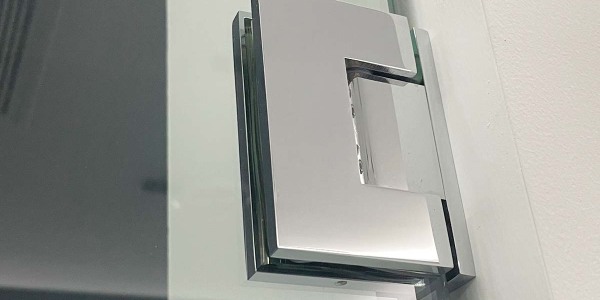What is the Difference Between Hinge and Pivot Shower Doors
Upgrading your shower enclosure can transform your bathroom, but choosing the right door can feel overwhelming. Two popular options are hinge and pivot shower doors. Both add modern functionality and style, but their differences can impact your space, layout, and usability. Here's what you need to know to make the right choice.
Hinge Shower Doors: Classic and Reliable
Hinge shower doors have been a bathroom staple for decades. They offer a traditional design with dependable functionality.
How They Work
Swing Mechanism: Hinge doors open like a standard door, swinging inward, outward, or both. The hinges attach to the shower frame or wall.
Single or Double Doors: Depending on your shower size, you can choose a single or double-door configuration.
Key Considerations
Space Needs: Hinge doors need enough room to swing open fully. In smaller bathrooms, you may need to rearrange furniture or ensure clearance.
Durability: These doors are sturdy and designed to handle heavy daily use, making them a long-lasting option.
Style Flexibility: Hinge doors can suit both traditional and modern bathrooms. You can choose from framed or frameless designs to match your aesthetic.
Pivot Shower Doors: Sleek and Space-Saving
Pivot shower doors are a more modern option, valued for their minimalist design and efficiency.
How They Work
Pivot Mechanism: These doors rotate around a pivot point, usually at the top and bottom of the door. This allows for smooth, space-efficient movement.
Flexible Opening: Pivot doors open inwards, outwards, or both, making them versatile for different bathroom layouts.
Key Considerations
Compact Design: Pivot doors save space, making them perfect for smaller bathrooms. They don’t need as much clearance to open compared to hinge doors.
Ease of Use: Pivot doors glide smoothly, which can be helpful for those with limited mobility.
Modern Appeal: Pivot doors, often frameless, create a sleek, open look that makes your bathroom feel larger.
Comparing Hinge and Pivot Shower Doors
Here’s a quick breakdown of their key differences to help you decide:
Feature Hinge Doors Pivot Doors
Space Requirements Require clearance to swing open Save space with pivoting design
Design Style Classic and versatile Sleek and modern
Durability Highly durable Smooth operation, lighter look
Cost Generally more affordable Can be pricier, especially frameless
Ideal For Larger bathrooms Small or modern bathrooms
How to Choose the Right Shower Door
Consider these factors when deciding between hinge and pivot doors:
Bathroom Size: Pivot doors are better for small bathrooms, while hinge doors work well in larger spaces.
Style Preference: If you want a sleek, contemporary look, go with pivot doors. For a timeless design, hinge doors are a solid choice.
Budget: Pivot doors, especially frameless options, tend to cost more. Hinge doors are usually more budget-friendly.
Installation Needs: Both types require professional installation, but pivot doors may demand extra precision due to their mechanism.
Final Thoughts
Hinge and pivot shower doors each have unique advantages. Hinge doors deliver a classic, durable design suited for larger bathrooms. Pivot doors offer a sleek, space-saving solution ideal for modern or compact spaces.
By assessing your bathroom layout, design preferences, and budget, you can choose a shower door that enhances both the style and functionality of your space.






